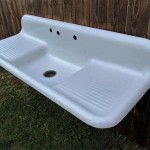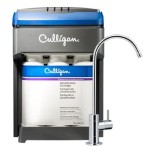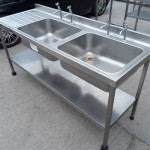How to Clean a Black Sink and Keep it Sparkling
Black sinks offer a sleek, modern aesthetic to kitchens and bathrooms. However, their dark surface can make water spots, soap scum, and scratches more visible. Proper cleaning and maintenance are crucial to preserving their beauty and extending their lifespan. This guide provides comprehensive instructions for cleaning black sinks made of various materials.
Identifying Your Sink Material
Before starting any cleaning process, it is essential to identify the material of your black sink. Common materials include composite granite, stainless steel, cast iron, and porcelain. Cleaning methods vary based on the sink material, and using the wrong approach can cause damage. Check the manufacturer's instructions or contact the retailer if you are unsure about your sink's composition.
Daily Cleaning for Black Sinks
Daily cleaning prevents the buildup of grime and maintains the sink's shine. This simple routine can significantly reduce the need for more intensive cleaning.
Steps for Daily Cleaning:
- Rinse the sink with warm water after each use.
- Wipe the sink with a soft microfiber cloth or sponge.
- Dry the sink thoroughly to prevent water spots and mineral deposits.
Tackling Stubborn Stains and Hard Water Deposits
Even with regular cleaning, stubborn stains and hard water deposits can accumulate. The following methods address these issues effectively.
Method 1: Baking Soda Paste
Baking soda is a gentle abrasive cleaner suitable for most black sink materials. It effectively removes light stains and hard water buildup.
Steps:
- Create a paste by mixing baking soda with a small amount of water.
- Apply the paste to the stained areas and let it sit for 15-20 minutes.
- Gently scrub the areas with a soft sponge or cloth.
- Rinse thoroughly with warm water and dry completely.
Method 2: Vinegar Solution
White vinegar is a natural cleaning agent effective against hard water stains and soap scum. Its acidity helps dissolve mineral deposits.
Steps:
- Fill a spray bottle with equal parts water and white vinegar.
- Spray the solution onto the affected areas and let it sit for 10-15 minutes.
- Wipe clean with a soft cloth or sponge.
- Rinse thoroughly with warm water and dry completely.
Method 3: Dish Soap and Warm Water
For general cleaning and removing grease or food residue, dish soap and warm water are often sufficient.
Steps:
- Fill the sink with warm water and add a few drops of dish soap.
- Wash the sink with a soft sponge or cloth.
- Drain the soapy water and rinse the sink thoroughly with clean water.
- Dry the sink completely with a soft cloth.
Cleaning Specific Sink Materials
Specific materials may require tailored cleaning approaches. Always consult the manufacturer’s instructions for best results. The following provides general guidance.
Composite Granite Sinks
Avoid abrasive cleaners and harsh chemicals. Stick to non-abrasive cleaners specifically designed for composite granite. Soaking the sink with a baking soda paste can help remove stubborn stains.
Stainless Steel Sinks
Specialized stainless steel cleaners can help prevent streaks and maintain shine. Avoid using steel wool or abrasive scrubbers, as these can scratch the surface. A mixture of baking soda and water can be used for cleaning, followed by rinsing and thorough drying.
Cast Iron Sinks
Clean cast iron sinks with mild dish soap and warm water. Avoid abrasive cleaners and acidic solutions like vinegar, as they can damage the enamel coating. Dry thoroughly after each cleaning to prevent rust.
Preventing Damage and Maintaining Shine
Regular cleaning and preventative measures are crucial for preserving the beauty of a black sink.
Key Prevention Tips:
- Avoid using abrasive cleaners, steel wool, or harsh chemicals.
- Do not leave standing water in the sink for extended periods.
- Avoid dropping heavy objects into the sink, as this can chip or scratch the surface.
- Use a sink grid to protect the bottom of the sink from scratches.
- Clean up spills immediately to prevent staining.
By following these cleaning and maintenance practices, you can keep your black sink looking its best for years to come.

How To Clean A Black Sink Eliminate Stains Soap Buildup

The Best Way To Clean A Black Composite Silgranit Sink

How To Clean A Black Sink Eliminate Stains Soap Buildup

How Can I Clean This Black Sink Hometalk

How To Clean A Black Sink Eliminate Stains Soap Buildup

How To Re Black Granite Sinks

How To Clean A Composite Sink Qs

How To Clean A Composite Sink Qs

How To Get Your Composite Sink Looking Like New Again

Composite Sinks Cleaning Recommendations







